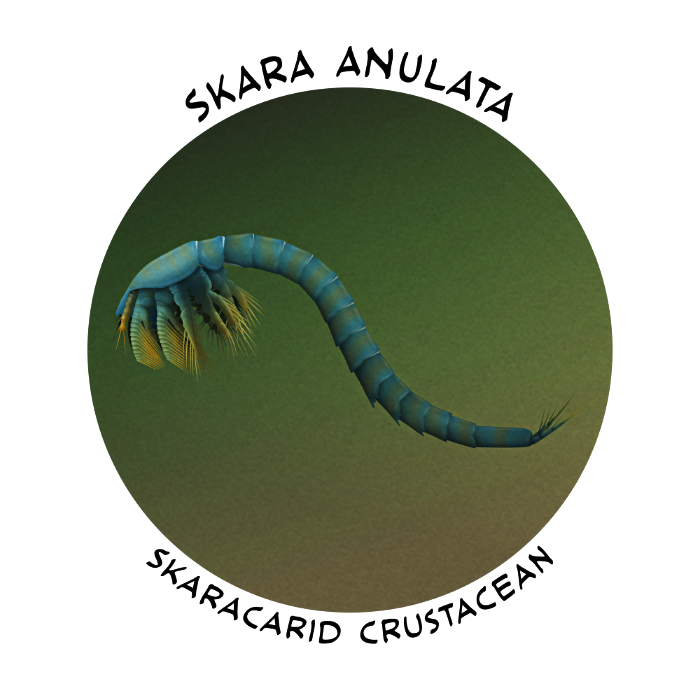We’re finally at the end of this series, and to finish off let’s look at one of the few types of Cambrian true crustaceans that are known only from fully mature adults: the skaracarids.
These tiny soft-bodied meiofaunal animals are known from late Cambrian areas of “Orsten-type preservation” in Sweden and South China, with a possible additional fragmentary occurrence in Poland – suggesting that they had a global distribution.
Three different species have been described, with Skara anulata from the Swedish Orsten Lagerstätte (~497 million years ago) being the largest of them.

It was still minuscule even as an adult, just 1.5mm long (0.06″), and had an eyeless head with a small protrusion at the front tip that may have been some sort of sensory organ. It had five pairs of appendages on its head and one pair at the front of its body, with most of them bearing long dense spines along their edges, then the rest of its long body was limbless and ended in a forked “tail”.
With its spiny limbs it would have been a filter-feeder, probably swimming just above the seafloor and either sifting out suspended particles from the water or brushing along the surface of the sediment to stir up organic matter and microbial biofilms from the mud.
The skaracarids exact evolutionary relationships are uncertain, although they’ve been proposed to be related to either the copepods or the oligostracan crustaceans, particularly the mystacocarids and the fish lice.
There’s still a lot of murkiness in the crustaceans’ Cambrian fossil record, and disputes over the arthropod evolutionary tree in general, so there’s plenty of room for future discoveries to give us some interesting surprises.
And one day, probably not even that far in the the future, everything I’ve written and illustrated for this series will be just as ridiculously outdated as the bizarre old reconstructions of Hallucigenia and the hypotheses about the Burgess Shale “weird wonders” all representing near-alien “failed” branches of life with no living relatives.
I can’t wait to see what weird things we discover next.
